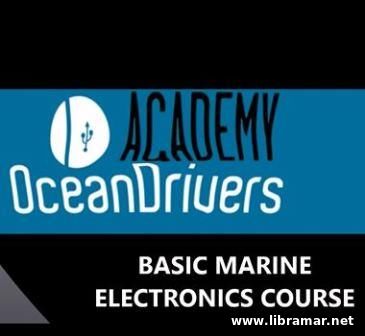 Welcome to this basic marine electronics course. Let us see what we are going to learn in this course. The first part of the course is about the sensors, including wind sensors, speed sensors, depth sensors and all others installed on board – what are the differences between different technologies used to build the sensors, how we are supposed to install and maintain them.
The second part of the course is devoted to the protocols and networks – so, what are the differences between different protocols used in marine electronics, why is one better than the other, what is the wiring to connect electronics, and how can the products by the different manufacturers be compared.
The third part is about the screens or displays – where to install those, differences between screen building technologies etc. After that we will move to the processors – what functions are calculated inside the processors, what is the mathematics and logic behind it, and why are they so important.
The fifth, and last, part of the course is about the onboard computers and onboard navigational software – how can we integrate our electronic systems in the computer and navigation software, why it is important and why and how it make our system a complete system, allowing us to sail safer and faster.
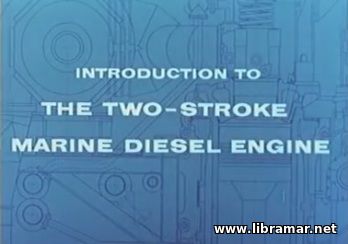 As the name of this film implies, it provides the required basic intro to the two-stroke marine diesel engines. It was prepared on the basis of the valuable input provided by Viggo A. Kjaer, professor at The RTU, i.e. Royal Technical University of Denmark. Today, the diesel engine propels half the tonnage of the whole world shipping.
Given good care, the diesel engine will provide a maximum of effect on a minimum of oil consumption. The engineer is here for that, at the moment he is checking the temperatures of the exhaust and cooling water.
His routine inspection is taking him further down to the second platform with the intercoolers for charging air. Now, he has reached the bottom where his flashlight has revealed the return piston cooling oil behind the sightglasses...
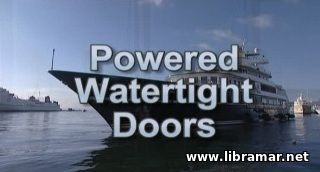 When you join your vessel for the first time, note that it critically important for your safety to become thoroughly familiar with the particulars of the vessel, safety equipment on board, their design features and locations. One of the design features normally fitted to nearly all types of ships is the use of the powered watertight doors intended to protect the ship's hull from the risk of flooding in case of the grounding, collision or structural damage.
When closed, these doors become part of the ship's structure acting as a sort of reliable barrier for the flood water, and their strength is vital - they are built from the heavy steel requiring them to be moved by hydraulics or powered by means of the electric motors.
Watch this training video and you will get a full idea of what the shipboard powered watertight doors are, how and where they are commonly installed, what are the dangers associated with their operation in you fail to follow the correct procedure, and how to avoid the risks of getting trapped and harmed. This training will be best if watched with this booklet on same topic since they perfectly supplement each other.
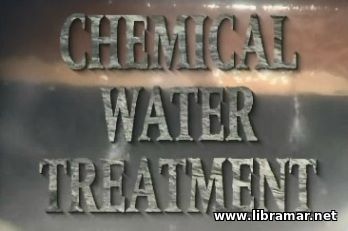 There are a great variety of ships at sea today whose many technical specifications of engineering installations. The one thing that is common to all of them is that they all require the use of water - one way or another. It may be used for steam production or engine cooling, or simply for consumption by the officers and crew. In fact, water will be used on board in considerable quantities.
Fortunately, there is always plenty of it available in the form of a sea water; they can pump it and use it straight away for washing the deck, for example. But if you try and use this water in a boiler, or for cooling your main engine, in a few days catastrophe will hit the ship - the boiler could blow up or the main engine get damaged. This is because sea water is contaminated by dissolved and dispensed solids, namely sodium chloride, calcium carbonate, magnesium carbonate and calcium sulphate.
These form deposits which can cause overheating and mechanical breakdown, making it unsuitable for use in boilers and in engine cooling systems, just like it is unsuitable for drinking by human being. that is why the cleaning and treatment of water on board the vessel is so important for the ship's efficient operation - and that is where chemical treatment plays a vital role by preventing internal corrosion and scaling formation...
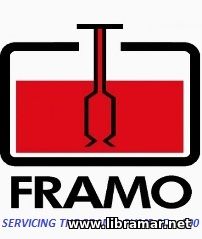 Located in Bergen, Norway, FRAMO has a very long tradition as the leading supplier of submerged cargo pumps to the world tanker market. The research and development department of the company is working continuously, upgrading the pump design to meet all the latest international rules and regulations. Before you enter the cargo tank to service the cargo pump, always close the hydraulic pressure inlet valve and secure it.
Familiarize yourself with the ship's safety rules. Also, pick up the number of standard tools you need for the servicing from the FRAMO toolbox. Before you start the service, study the cargo pump service manual carefully, descriptions and drawings. We will now show you how to dismantle the new cargo pump SD-200 design. Sequence number one - dismantling of impeller and wear rings - normal service conducted by the crew members on board ships...
The present video training was released by FRAMO specialists with the intention to provide the crew members of the vessels with FRAMO pump installed on board as well as servicing engineers, trainees and students with the visual aid they could use in addition to the printed technical materials, when performing the periodical maintenance of the SD-200 pumps.
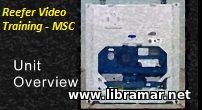 This is the officially distributed MSC training course... The unit consists of five major sections - the compressor section, condenser section, evaporator section, control box section, and the electronic partflow section. The compressor section includes compressor, discharge valve, suction valve, high pressure switch, pressure regulator valve, stepper suction modulation valve fitted on the new units which replaces the suction modulation valve and the suction solenoid valve for the older ones, quench valve and supply air sensors.
The units are fitted with two supply air sensors - one sensor is needed for recording data while the other one is for controlling cargo temperature. Then there are power cabling and unit identification plate, receiver tank, king valve, filter dryer, condenser section including air cool condenser coil, condenser fan grill, fan and motor. The condenser fan causes the air to be drawn from the bottom of the condenser coil and to be discharged through the condenser fan grill.
The evaporator section includes access panels, heaters, fresh air vents; the purpose of fresh air vents is to provide ventilation for commodities that require fresh air circulation. The vent must be closed when transporting frozen cargoes. To adjust the percentage of air flow, loosen the nut and rotate the disk to the desired percentage of air flow...
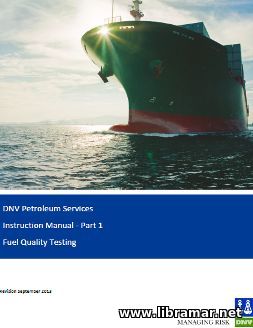 An excellent training course from one of the leading classification societies. The training set consists of the booklet accompanied by the two videos. The booklet opens with the introduction to the FQT service provided by DNV. Subject service was introduced with the intention to provide required support to the maritime shipping community. The volume will give readers the information about the line sampler and sampling kit.
The document will also cover the sampling procedure including basic safety considerations, preparation of fuel samples, taking and maintaining samples as required by the MARPOL Annex VI, dispatch of the samples and other aspects. The next chapter of the booklet provides general guidance on bunkering and FSC, standing for the fuel system check samples, their distribution, sampling procedure plus reporting and testing requirements. There are two chapters giving readers necessary guidelines and recommendations for the disputes and for tank and investigation samples.
The troubleshooting and assistance issues have been dealt with in a separate chapter. The closing chapter of the book is dealing with the information relating to the interpreting of test parameters such as water and density, viscosity and air, flash point and catalytic fines. Compatibility testing and acid number, and many other important points.
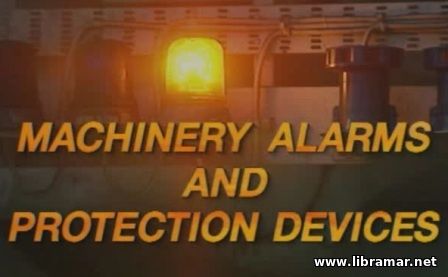 The poor maintenance and incorrect operating of the shipboard machinery may result in a disaster. Such disasters can be really catastrophic, presenting immediate danger to the health of the people onboard, cause harm to the environment, etc. However, most of the accidents can be avoided. The present video training lesson is intended to acquaint the trainees with the shipboard machinery alarms and protection devices.
Every person engaged in the operation and maintenance of any machinery piece on board ship shall have a sound understanding of these devices as they play a critically important role in providing safe and effective operation. Of course, the main reference shall be made by the engineers to the user manuals and other documents accompanying the machinery items.
However, there is a need for some general introductory information that would allow future marine engineers to have an idea of how important these devices are; the experienced engineers, in turn, may use this video to refresh their technical knowledge. Needless to say that it is a duty of every single person in the engine room to pay close attention to the protective devices and alarms installed on the machinery.
|







